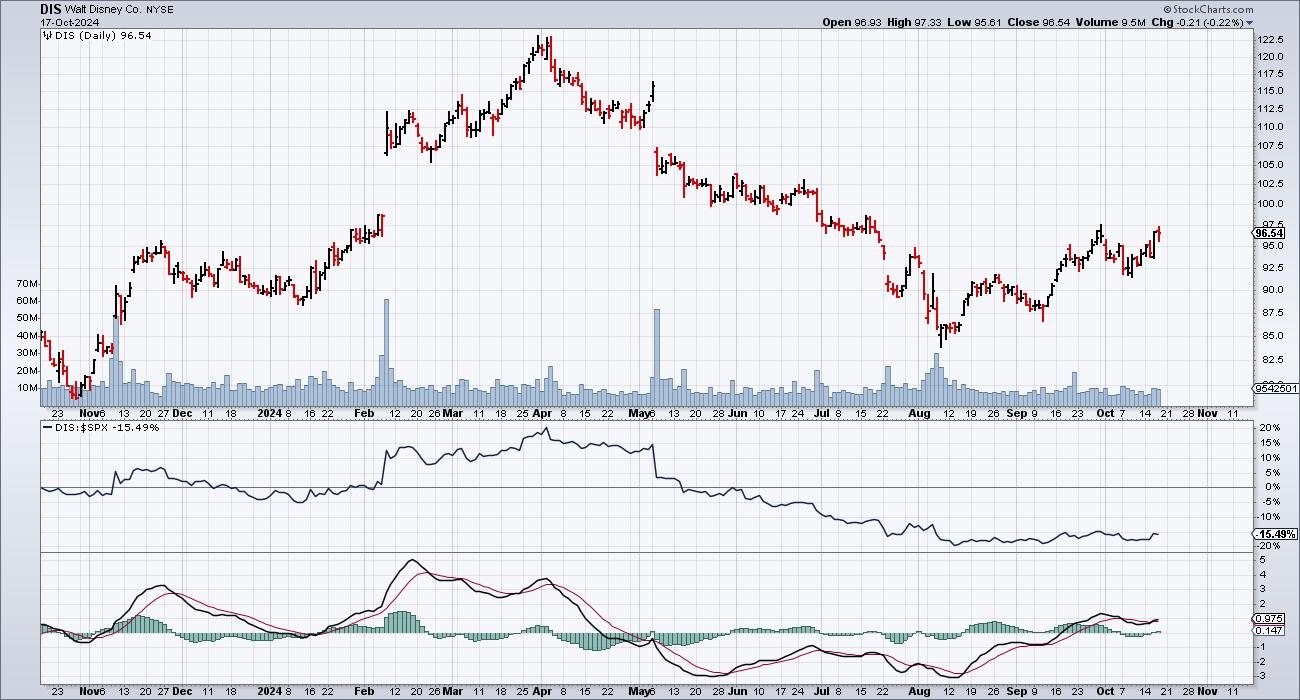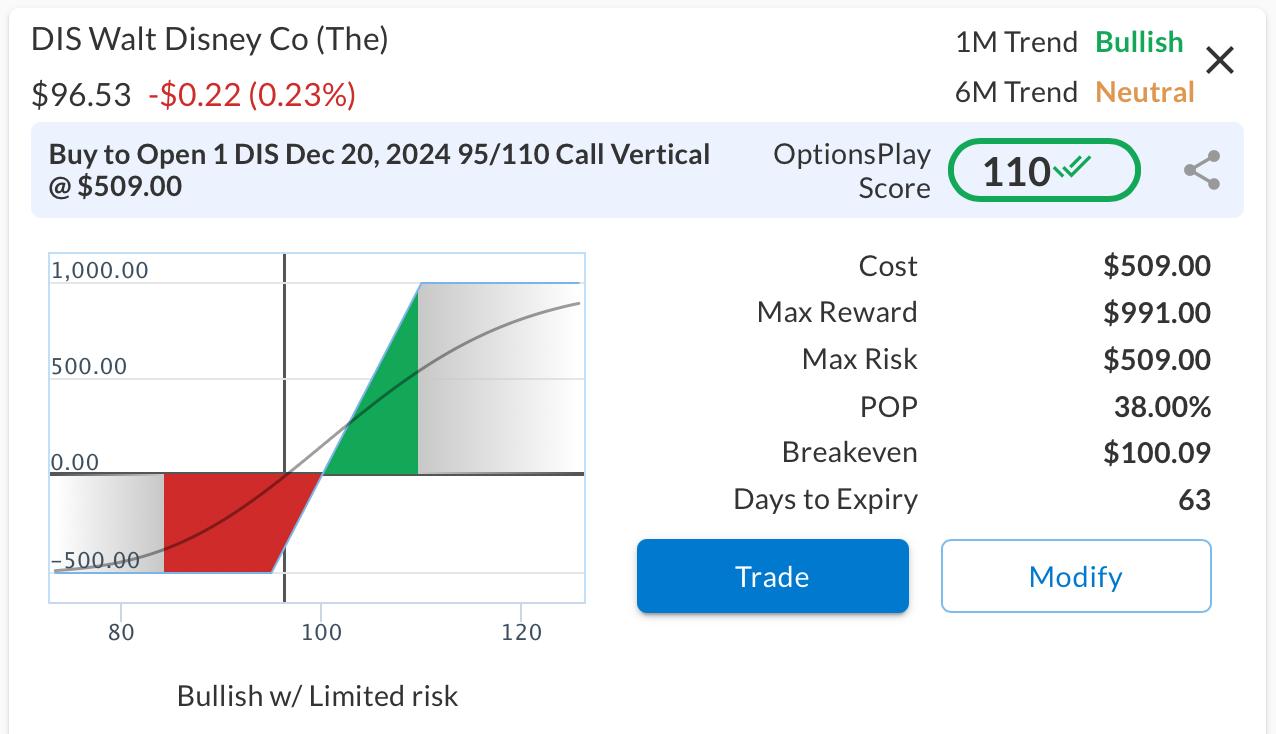 Walt Disney Co. (DIS) has struggled as a business over the past few years and isn’t on many investors’ radars these days. However, Disney seems to have turned a corner last quarter and is positioned for a resurgence in its core theme parks and streaming businesses.
Walt Disney Co. (DIS) has struggled as a business over the past few years and isn’t on many investors’ radars these days. However, Disney seems to have turned a corner last quarter and is positioned for a resurgence in its core theme parks and streaming businesses.
With consumer spending in the travel sector remaining robust, demand for Disney’s theme parks is increasing. Additionally, Disney+ is on track to become profitable by Q4, and the inclusion of ESPN could further enhance Disney’s edge in the streaming space. These factors provide upside potential for Disney’s stock price, particularly as the company recovers from recent challenges and realigns its strategic focus.
Disney’s stock price has recently broken above its trading range, pulled back, and bounced off its $92 support level (see chart below). This suggests there is momentum to target $102 to the upside and $113 as an extended target to the upside.

FIGURE 1. DISNEY’S STOCK PRICE HAS THE POTENTIAL TO MOVE HIGHER. An improving relative performance and moving average convergence/divergence support a potential higher price move in Disney.Chart source: StockCharts.com. For educational purpose.
With the relative performance of DIS to the S&P 500 ($SPX) improving and the moving average convergence/divergence (MACD) showing signs of strengthening, this confirms the upside potential as DIS potentially breaks out above its $97.50 resistance.
Disney stock appears modestly undervalued, trading at 18x forward earnings, slightly below the industry average. Its expected earnings per share (EPS) growth of 14.5% aligns with the industry average, while its revenue growth forecast of 4% aligns with its peers. However, Disney’s net margins of 5% surpass the industry average of 3%, indicating a stronger outlook on profitability, especially with anticipated improvements from its streaming business and sustained demand in its theme parks.
Options on DIS are expensive, with the IV rank at 67%. So, to capitalize on a potential major breakout for DIS, I suggest buying a December $95/$110 call vertical for $5.09 debit.
A call vertical involves buying a call option and selling another with a higher strike price. The two options have the same expiration date.

FIGURE 2. CALL VERTICAL ANALYSIS. Here, you see the cost of the trade, the risk curve, and the risk/reward tradeoff of the call vertical for DIS. Image source: OptionsPlay.
This structure allows an offset for the relatively expensive Dec $95 call options and reduces the overall risk by selling the $110 calls. This structure entails:
- Buying the Dec 20 $95 Call @ $6.25
- Selling the Dec 20 $110 Call @ $1.16
This call vertical spread allows for a maximum reward of $991 per contract if DIS is above $110 at expiration, with a maximum risk of $509 if DIS is below $95 at expiration.

